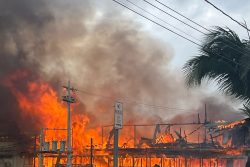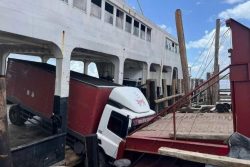The Environmental Protection Agency (EPA) has released the impact assessment for the Urau oil field Development Project and ExxonMobil estimates that the cost of the Urau Development Project will be close to US$12.7 billion. Members of the public have 60 days to make written submissions to the EPA.
According to the Environmental Impact Assessment (EIA), the Project will develop the Uaru, Mako and Snoek fields simultaneously. However, there is potential to develop other resources within the licensed area. The Urau Development Project will add at least 1.3 billion barrels of oil to the already more than 10 billion in oil recoveries in Guyana.
The cost is approximately 12.683 billion and includes the drilling of 38 to 63 wells, installing and operating subsea, umbilicals, risers, and flowlines (SURF) equipment, and use of a Floating Production, Storage, and Offloading (FPSO) vessel to process, store, and offload the recovered oil. The FPSO will be anchored in place and will be connected to the wells via SURF equipment to transfer produced and associated fluids from production wells to the FPSO, as well as treated gas and water from the FPSO to the injection wells.
It was stated that the proposed FPSO will be a newly-built floating facility with double-hull protection, whose approximate dimensions is expected to be 354 metres (1,161 feet) long by 64 metres (210 feet) wide by 33 metres (108 feet) deep. According to the EIA, the exact locations of the Uaru development wells have not yet been finalised; however, the wells will be drilled from ten drill centres. The Project life cycle consists of three main phases: Drilling and Installation, Production Operations, and Decommissioning.
It has been estimated that the Project will require a workforce of approximately 540 persons at peak of the development well drilling, 600 persons at the peak of the installation phase, 100 to 160 persons at peak of production operations with an additional 25 to 30 personnel on board each export tanker, and 60 persons at the peak of decommissioning.
The drilling of the 38 to 63 wells, is expected to take several years, with drilling currently scheduled from mid-2024 through 2029. Installation of the SURF and FPSO is expected to start in 2025 to be ready for initial production by late 2026, with operations continuing for at least 20 years. The EIA can be downloaded from the EPA’s website.







